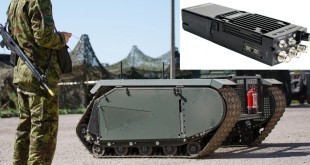Introduction In a world where renewable energy sources are becoming increasingly important, scientists have unveiled a groundbreaking technology that has the potential to transform the renewable energy landscape. Air-gen, a revolutionary invention capable of harnessing electricity from air humidity using almost any material, opens up new possibilities for clean and …
Read More »Revolutionizing Underwater Transportation and Defense: Unleashing the Power of Magnetohydrodynamic (MHD) Drive with DARPA PUMP
The vast expanse of the world’s oceans has always posed a unique set of challenges for transportation and defense. Marine propulsion systems move ships through the water, ensures a better safety standard for the marine ecosystem and are cost-efficient. Marine propulsion is the mechanism or system used to generate thrust to …
Read More »Transforming Homes: The Rise of Smart Home Technology
Introduction: In recent years, the concept of a smart home has evolved from a futuristic dream to a tangible reality. Thanks to rapid advancements in technology, our homes have become smarter, more connected, and more intuitive than ever before. Smart home technology has not only transformed the way we live …
Read More »Empowering Unmanned Aerial Vehicles (UAVs) and Swarms with Flying MANETs: Revolutionizing Battlefield Connectivity
In today’s battlefield, connectivity is essential. Soldiers need to be able to communicate with each other and with their commanders in order to coordinate their actions and share information. However, the battlefield environment is often hostile and can disrupt communications. This can put soldiers at risk and make it difficult …
Read More »Smart and Self-Healing: Exploring Programmable Matter in Mission Adaptive Military Systems
Introduction: In the ever-evolving landscape of military technology, advancements in programmable matter have emerged as a promising frontier. With the ability to transform and adapt in real-time, programmable matter opens new possibilities for mission-adaptive military systems. This article delves into the world of smart and self-healing programmable matter and its …
Read More »Unleashing the Power of Digital Video Processing: Exploring Trends, Technologies, and Market Insights
Introduction: In today’s digital age, video content has become a dominant force, captivating audiences across various platforms. Behind the scenes, digital video processing technology plays a pivotal role in enhancing, optimizing, and delivering the rich visual experiences we enjoy. In this blog article, we will delve into the world of …
Read More »Photonics in Agriculture: Transforming Sustainable Food Production and Distribution
Introduction: As the global population continues to grow, ensuring sustainable food production and distribution becomes an increasingly pressing challenge. Fortunately, advancements in technology are paving the way for innovative solutions. Photonics, the science and technology of light, is emerging as a transformative force in agriculture. By leveraging integrated photonic microchips, …
Read More »Hybrid Propulsion in the Automotive Industry: Paving the Way for Sustainable Mobility
Introduction In an era marked by increasing environmental concerns and the need for sustainable solutions, the automotive industry is undergoing a significant transformation. One of the key advancements driving this change is hybrid propulsion technology. Hybrid vehicles combine the benefits of both internal combustion engines (ICE) and electric motors, offering …
Read More »Unlocking the Future: Exploring the Potential of Quantum-Inspired Robotics and Autonomous Systems
Introduction As technology continues to advance at an unprecedented pace, our understanding of the quantum world has opened up new possibilities in various fields. One such exciting realm is the intersection of quantum physics and robotics, giving rise to quantum-inspired robotics and autonomous systems. These cutting-edge technologies have the potential …
Read More »Enhancing Battlefield Connectivity: How MANET Radios Empower Military Tactical Networks
Introduction: In the ever-evolving landscape of military operations, maintaining effective and reliable communication on the battlefield is of utmost importance. Seamless connectivity among troops, vehicles, and command centers is essential for successful coordination, situational awareness, and timely decision-making. Additionally, the rise of unmanned aerial vehicles (UAVs) and their ability to …
Read More » International Defense Security & Technology Your trusted Source for News, Research and Analysis
International Defense Security & Technology Your trusted Source for News, Research and Analysis


